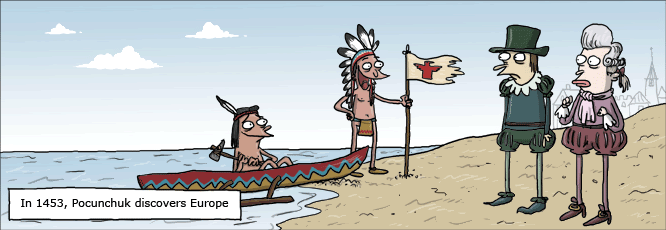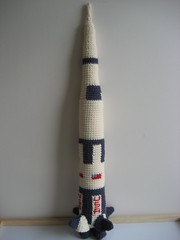Akhenaten:
KV55 mummy (newly confirmed)
Did he have some a genetic disorder affecting his appearance?
One of the biggest areas of speculation regarding Akhenaten, the broader Amarna period, and the artwork of the period is whether the frankly weird-looking depictions of Akhenaten represented how he actually looked or whether they were a deliberate attempt to combine male and female traits in the person of Akhenaten as the living priest of Aten.
Amarna period art is frequently described as “realistic” or “naturalistic” which has added fuel to the fire of “ZOMG, he must have looked all kinds of weird,” because everything else looks so “real” compared to Egyptian art from other periods. Thus, Egyptologists, random medical doctors, and a variety of other people have suggested all kinds of potential causes for the long, narrow face, broad fleshy hips and thighs, man-boobs, etc. Things like Marfan's, Froelich's, Klinefelter, and a few others, some of which would have rendered him sterile, which made explaining the existence of at least 6 daughters somewhat complicated. The latest genetic and CT analysis indicated that the mummy identified as Akhenaten did not have any of these syndromes, nor did Tutankhamun.
In actuality, I would argue that Amarna style art isn't significantly more “realistic” compared to more traditional ancient Egyptian art. Different things were depicted in different ways, like the intimate scenes of family life with Akhenaten, Nefertiti, and their six daughters and there is a more fluid, less rigid feel to many of the depictions. But it's important to note that during the period almost EVERYONE is shown with a weird elongated head, long neck, spindly arms, and super long fingers. Why? Because artistic conventions tended to trickle down from the top in all periods of strong central control, including during the Amarna period. In short, royal depictions were imitated. So, while the king has a weird-ass head and crazy spindly arms, so does everyone else. One of the best places to see this is in the tomb of
Ramose at Thebes (TT55). Ramose was a vizier for Amenhotep III, Akhenaten's father. He began work on his tomb well before his death, as all good, wealthy Egyptians did. A large portion of his tomb is very typical mid to late 18
th Dynasty style work done during the reign of Amenhotep III. People are shaped normally. The freakin' Aten disk isn't everywhere. Then there's a break (see the West Wall, north side), where a very different style appears from the very early part of Akhenaten's reign, while he was still Amenhotep IV. The back of the head on everyone is suddenly elongated. Their arms are all spindly. Mouths are carved a bit differently. Hips are a bit wider. Now, did everyone suddenly change the shape of their skulls or is this an artistic convention? Listeners of Coast to Coast AM may well disagree, but I'm going with artistic convention. And the recent study backs me up – in addition to the genetic analysis, they did CT scans and calculated cephalic indexes. Neither Akhenaten nor Tutankhamen, (nor anyone else but Yuya – Tut's great-grandfather) have an index indicating an elongated cranium.
The JAMA article does note that the remains Tutankhamun and Akhenaten are not really in a condition to tell if they had moobs, though, so if you want to run with that, I guess you can. I'd wear a sports bra, though.
Akhenaten's Burial
In 1907, Edward Ayerton, the archaeologist working for the wealthy American collector, Theodore M. Davis found KV55. The tomb had been disturbed in antiquity. In the entrance corridor was one leaf of a door for a shrine made for Tiye, Akhenaten's mother. More pieces of the shrine were found along the corridor as they continued clearance. The shrine had been commissioned by Akhenaten, but his names had been removed prior to the inclusion of the shrine in the tomb. Inside the tomb was a wooden anthropoid (human shaped) coffin with a crook and flail (things the king carries) and a bronze uraeus. Most of the gilded face had been ripped off below the eyes and all the cartouches had been erased. A set of canopic jars (used to hold internal organs) was also found. These had originally been prepared for Kiya, one of Akhenaten's minor wives, but were later adapted for use by someone else. Also in the tomb were a few other funerary items, including magic bricks inscribed for Akhenaten. The mummy itself (skeletonized by that point, but still wrapped) had gold bands bearing the name of Akhenaten. In addition, there were seal impressions found on the floor suggesting that the burials of both Tiye and Akhenaten had been moved from tombs at Akhetaten by Tutankhamun after the abandoment of the new city.
Davies decided that he had found the tomb of Queen Tiye and published it as such. I could suggest polite reasons why he decided that, but instead I'll just say he was an arrogant jerk and leave it at that. Others weren't so certain. There was debate as to the age and sex of the mummy (more accurately “skeleton”). The bones were sent up to Cairo for analysis by Grafton Elliot Smith, who examined and published early medical analyses of many of the royal mummies in the early 20th Century. Rather than identifying them as an older woman (as one would expect for Tiye) Smith initially thought they belonged to a young man. In fact, there's a letter from Smith in Cairo back to Luxor where he's all "Dude, are you sure you sent the right mummy? I thought it was going to be a chick? This skeleton is a total sausage fest." He later revised this as a “young” man wouldn't fit the historical record for Akhenaten and pushed the age into roughly middle age. Other, more recent studies, have suggested the man was “young,” further complicating things, because Akhenaten reigned too long to be "young" when he died. And then there's what we know of Akhenaten and the Amarna Period itself.
Above: Akhenaten grins knowingly at everyone who will be confused about his identity for the next century
One of the things that Akhenaten is known for is picking up and moving the capital and most of the people needed for administration to a brand new city in the middle of the desert. A favorite professor has long suggested that this was because Akhenaten was batshit crazy and the new city of Akhetaten served as one nice big insane asylum for his crazy ass while other people did their best to keep the country running. While that professor has drunk long and deep of Haterade where Akhenaten is concerned, it's not the worst idea ever and I find it entertaining to think about even though we'll probably never know for sure. I guess maybe I should add that to the time-travel to-do list.
Anyway, one of the things Akhenaten did with his new city was post boundary stelae – a bunch of big carved rocks with his bloviating on them. Sort of like the huge-ass signs all over Illinois announcing who the mayor, the governor, etc., are. On these, he talks about founding his city and how he will never leave, even if his best-beloved wife, Nefertiti asks him to. And there's some gushing about the Aten. Ooooh, shiny, shiny sun disk thou art so wonderful! If I stare at you long enough I see pretty pictures in my brain. What else is new?
In addition, he started construction of tombs in the nearby hills for himself, his family, and his courtiers. Pretty typical – Egyptian kings tended to be buried close to their principle residence and courtiers were often buried near the king or in an elite cemetery near major administrative centers. There are some beautiful elite tombs from Saqqara from this time period, including the one Horemheb was building before he became king. Saqqara being located near ancient Memphis which was one of the principle administrative centers in Egypt. So, since Akhenaten was so emo for the Aten and his perfect new city, a lot of people had trouble believing that the skeleton found in KV55, in other words, in Thebes was actually Akhenaten.
Add to that the steady, deliberate erasure of everything to do with Akhenaten, his crazy-ass Aten worship, his new constructions, and anything to do with him and people had an even harder time believing the dude in KV55 was Akhenaten as it was speculated that his mummy might well have been destroyed.
Contradicting that was the significance generally given to preservation of the body for the afterlife. Usually preservation of the name is important as well, but as Akhenaten's name was being steadily erased, maybe preserving his body was that much more important. I'm still crazy impressed that the skeleton in KV55 is him.
To be honest, I was never really sure though I had serious doubts that the KV55 remains were Akhenaten. I had also somehow missed the information about the other inscriptional material in the tomb, including the mummy bands, though, so if I had paid more attention to that in the past, I think I would have been more likely to accept the KV55 skeleton as Akhenaten.
In any event, the DNA results indicate that it is in fact Akhenaten. I sort of hope Davies is stomping around in the afterlife all kinds of butthurt about being wrong. Possibly being mocked in ancient Egyptian by Tiye and Akhenaten themselves. Any of my Egyptological friends want to pitch in with how to say "suck it, old man" in ancient Egyptian?
More on Tutankhamun himself and other things later today or tomorrow.
















